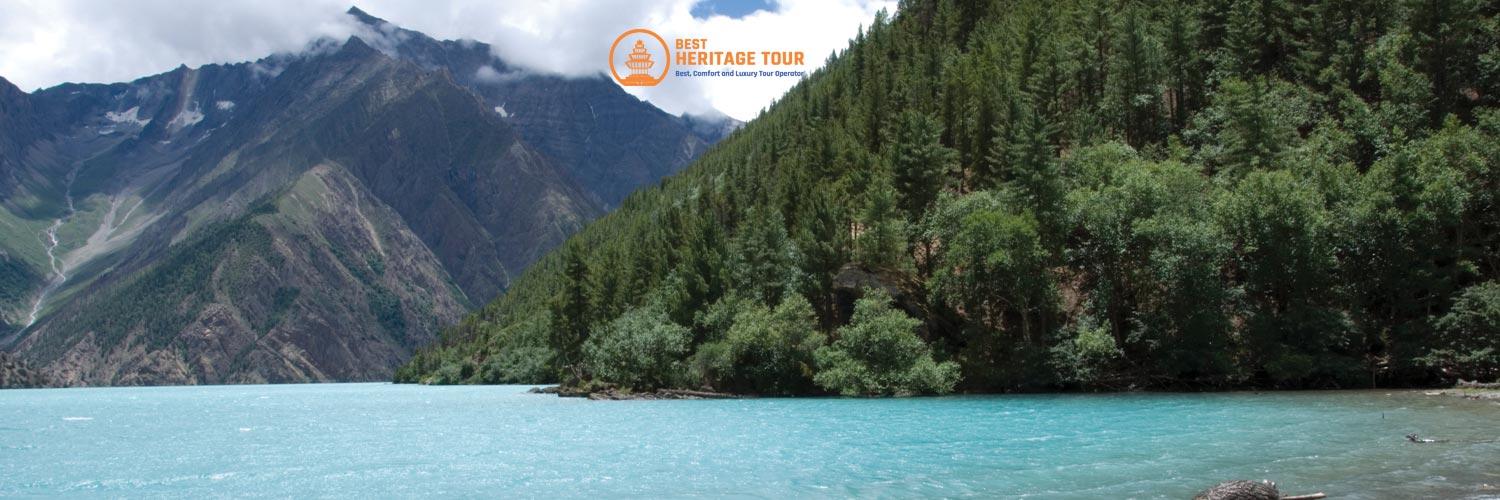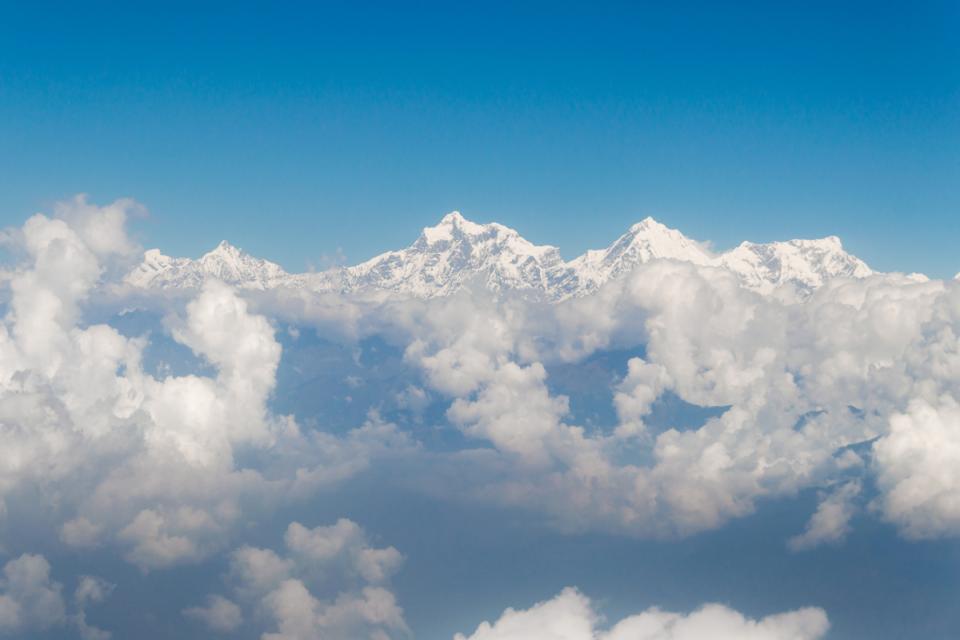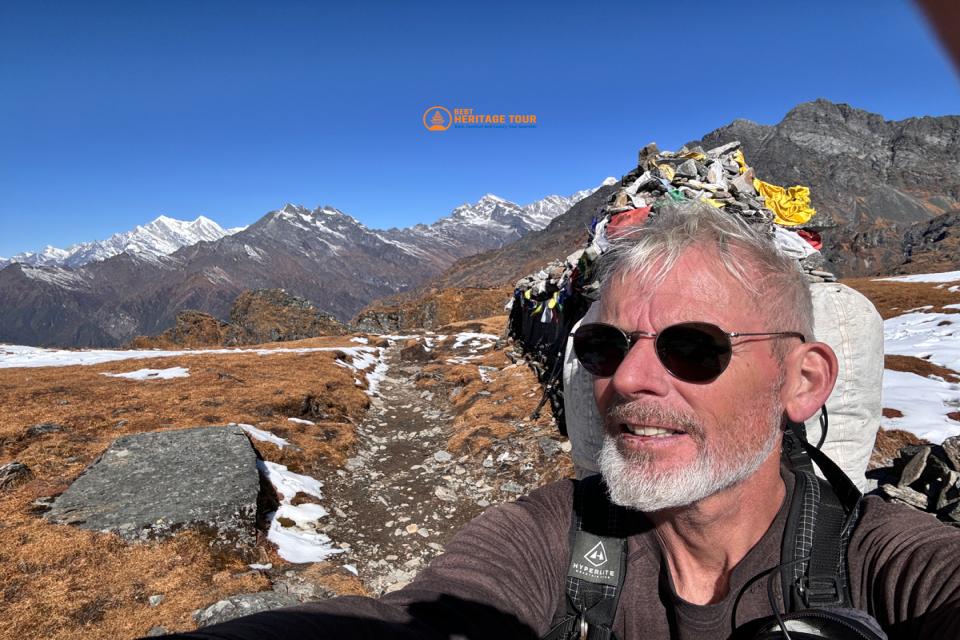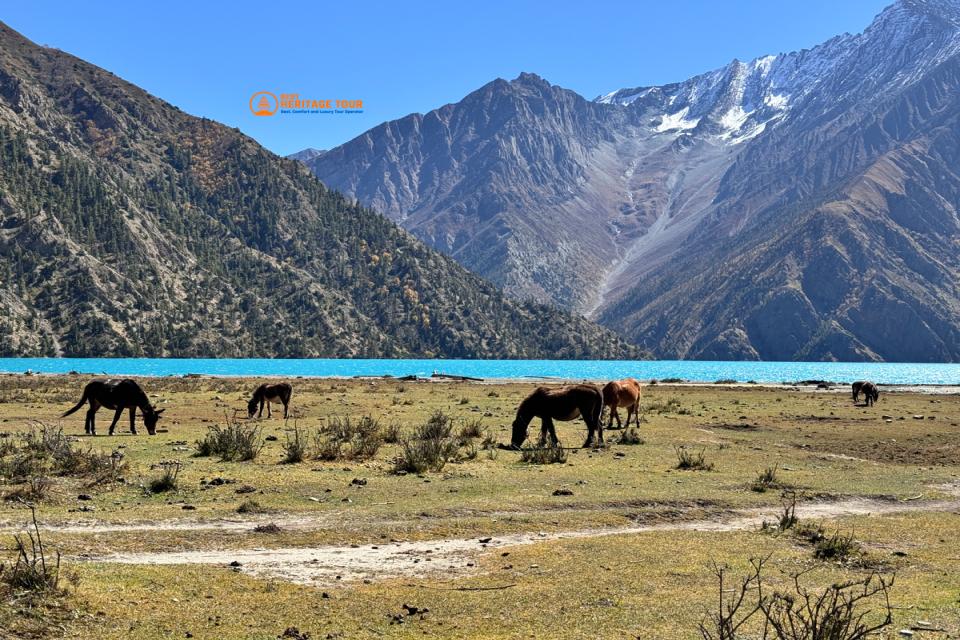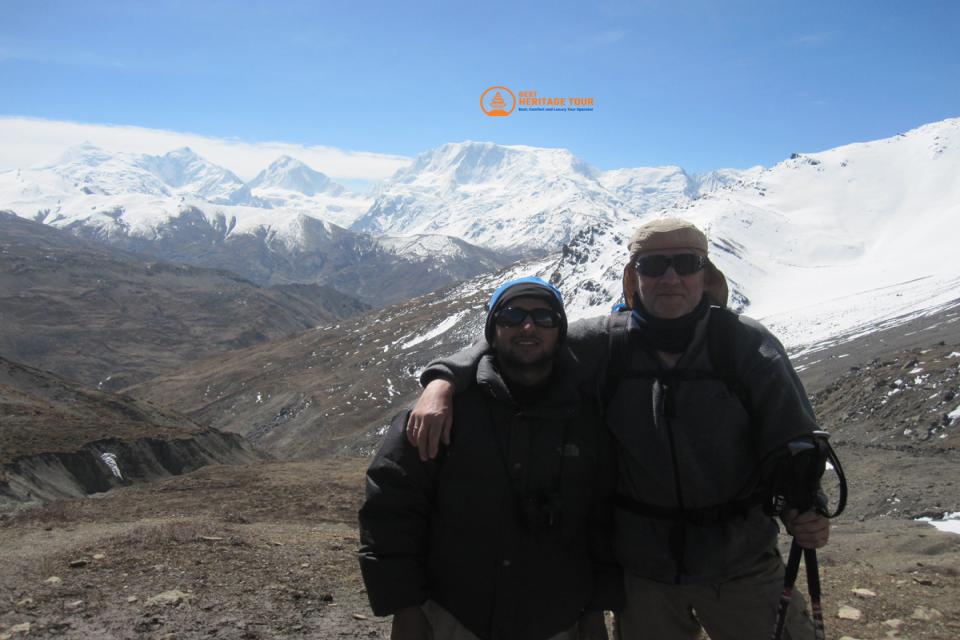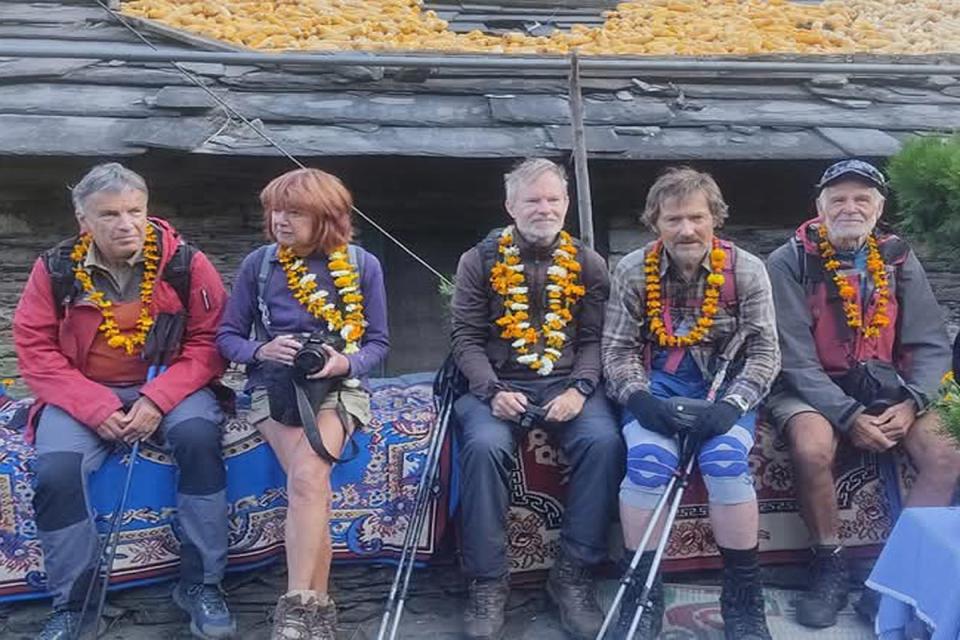Are you dreaming of a trek in Nepal that leads far from the crowds, where the quiet of the mountains replaces the buzz of tourist hotspots? If you're seeking something more meaningful, a journey through untouched landscapes, rare Himalayan cultures, and remote trails, then the off-the-beaten-path treks in Nepal for 2025/2026 are your perfect escape. Unlike the heavily trafficked Everest Base Camp or Annapurna Circuit, these hidden treks in Nepal offer solitude, scenic beauty, and cultural authenticity that few travelers get to experience.
In this blog, we’ll uncover some of the best unknown treks in Nepal, including Tsum Valley, Upper Dolpo, Makalu Base Camp, and Kanchenjunga. You'll also find practical insights on permits for restricted areas, fitness requirements, best trekking seasons, and how to pack smart for remote adventures. Whether you’re an experienced trekker or venturing into Nepal’s wilderness for the first time, this guide will help you explore less crowded treks in Nepal while supporting local communities and embracing sustainable travel.
Why Choose Off-the-Beaten-Path Treks in Nepal?
When most people think of trekking in Nepal, iconic names like Everest Base Camp or the Annapurna Circuit likely come to mind. But what if we told you that the true magic of the Himalayas often lies far from these crowded paths?
If you're the kind of traveler who values solitude, authenticity, and untouched beauty, then Nepal’s off the beaten path treks are exactly what you're looking for.
Discover the Side of Nepal Few Ever See
Choosing hidden treks in Nepal isn’t just about avoiding tourist traffic, it’s about stepping into a world where ancient traditions still thrive, mountain villages remain unchanged for centuries, and the only noise is the whisper of wind across high-altitude passes.
Here’s why these less crowded treks in Nepal offer a richer, more rewarding experience:
1. Experience True Solitude in the Himalayas
Imagine trekking for hours and not seeing another soul, just towering peaks, alpine forests, and the occasional grazing yak. That’s the magic of solitude treks in the Himalayas.
- No long lines at tea houses
- No crowds at scenic spots
- Pure immersion in nature
Whether you're hiking through the wilds of Upper Dolpo or the sacred valleys of Tsum, you’ll find space to reflect, connect, and breathe.
2. Authentic Cultural Encounters
On these remote Himalayan treks, you're not just passing through you’re often welcomed as a guest.
- Stay in traditional local homestays in Himalayan villages
- Share meals with families who still live by ancestral customs
- Witness untouched Tibetan Buddhist culture in regions like Narphu Valley and Ganesh Himal
These interactions offer a window into a side of Nepal that mass tourism rarely touches.
3. Explore Pristine Natural Beauty
With fewer trekkers comes less environmental impact, and that means the natural surroundings remain nearly untouched.
- Spot rare wildlife in conservation areas
- Trek through unspoiled forests, hidden valleys, and high passes
- Camp under star-filled skies where there's no light pollution
Routes like the Makalu Base Camp or API Base Camp trek in Nepal take you through some of the country's most biodiverse regions.
4. Support Sustainable Adventure Travel
By choosing rare Himalayan treks and partnering with ethical trekking agencies, you're helping spread tourism more evenly across the country, reducing pressure on popular routes and bringing income to remote communities.
It’s a win-win:
- You enjoy a unique adventure
- Locals benefit economically without sacrificing tradition
- The environment stays protected
Top Off-the-Beaten-Path Treks to Explore in Nepal
Nepal is a land of endless adventure, and if you're craving less crowded treks filled with raw beauty and cultural authenticity, you’re in for a treat. While the popular trails have their charm, the real treasures lie in the hidden treks of Nepal routes that few tourists ever discover.
These remote Himalayan treks are perfect for trekkers seeking something different: unspoiled trails, warm encounters with mountain communities, and the thrill of the unknown.
Below is your curated guide to some of the best unknown treks in Nepal for 2025/2026. Each offers a unique blend of adventure, isolation, and soul-stirring scenery.
1. Tsum Valley Trek: The Sacred Hidden Valley
Nestled in the Manaslu region, the Tsum Valley trek is a peaceful pilgrimage through Tibetan Buddhist villages, ancient monasteries, and remote landscapes untouched by modern tourism.
- Highlights: Milarepa’s cave, Rachen Gompa, and intimate cultural immersion
- Best for: Spiritual trekkers and cultural explorers
2. Narphu Valley Trek: A Tibetan World beyond the Annapurna
Tucked behind the popular Annapurna Circuit, the Narphu Valley trek offers dramatic canyons, hidden villages, and rugged high passes like Kang La.
- Highlights: Traditional stone houses, yak pastures, and medieval forts
- Best for: Those seeking both challenge and cultural depth
3. Upper Dolpo Trek: A True Wilderness Expedition
Remote, wild, and mystical, the Upper Dolpo trek is one of the most challenging and rewarding adventures in Nepal.
- Highlights: Shey Gompa, Phoksundo Lake, high passes above 5,000m
- Best for: Experienced trekkers ready for solitude and spiritual serenity
4. Lower Dolpo Trek: A Shorter yet Scenic Alternative
Not quite ready for Upper Dolpo’s challenge? The Lower Dolpo trek still offers dramatic desert landscapes, Tibetan culture, and the stunning Lake Phoksundo.
- Highlights: Remote villages, Bon monasteries, and diverse terrain
- Best for: Trekkers with limited time who still want to go remote
5. Makalu Base Camp Trek: Raw, Rugged, and Rewarding
Less frequented but astonishingly beautiful, the Makalu Base Camp trek takes you deep into the eastern Himalayas with views of Everest and Lhotse from lesser-known angles.
- Highlights: Makalu-Barun National Park, rhododendron forests, high alpine wilderness
- Best for: Wilderness lovers and those seeking biodiversity
6. API Base Camp Trek: Far West Nepal’s Secret Gem
Located in the untouched far west, the API Base Camp trek is one of the least explored routes in the country. It’s remote, rugged, and remarkably peaceful.
- Highlights: Snowy peaks, alpine meadows, and cultural encounters with the Raute people
- Best for: Intrepid trekkers looking for complete solitude
7. Ganesh Himal Trek: Scenic Trails Close to Kathmandu
Despite its accessibility, the Ganesh Himal trek remains beautifully uncrowded. Think terraced hills, Tamang culture, and sweeping Himalayan panoramas.
- Highlights: Hot springs, Himalayan viewpoints, and tranquil villages
- Best for: Trekkers wanting offbeat beauty near the capital
8. Dhaulagiri Circuit Trek: High Altitude, High Reward
This demanding loop around the massive Dhaulagiri range is perfect for seasoned trekkers. The trail crosses glaciers and passes over 5,000m, offering epic alpine views.
- Highlights: Dhaulagiri Base Camp, French Pass, and remote mountain camps
- Best for: Hardcore adventurers with solid mountain experience
9. Kanchenjunga Base Camp Trek: A Journey to the World’s Third-Highest Peak
Bordering India and Tibet, the Kanchenjunga Base Camp trek takes you deep into the eastern wilderness. The landscapes are surreal, and the sense of remoteness is unmatched.
- Highlights: Remote Limbu and Rai villages, alpine valleys, dramatic glaciers
- Best for: Long-haul trekkers craving ultimate isolation
Best Time to Go for Remote Treks in Nepal 2025/2026
Timing your trek is just as important as choosing the right trail. When it comes to remote Himalayan treks, the weather, festivals, and altitude conditions all play a crucial role in making your adventure safe, enjoyable, and unforgettable.
So, when is the best time for remote treks in Nepal 2025/2026? Let’s explore the seasons, weather patterns, and cultural events that can shape your trekking experience.
1. Ideal Trekking Seasons for Off-the-Beaten-Path Routes
Nepal’s mountain climate varies widely, but two main trekking seasons are generally the safest and most scenic:
- Autumn (September to November):
This is the most popular trekking season, thanks to clear skies, moderate temperatures, and stable weather. Autumn is perfect for panoramic mountain views and vibrant cultural festivals. For off-the-beaten-path treks, autumn offers solitude compared to the busier classic routes. - Spring (March to May):
Spring brings blooming rhododendrons and mild weather, making it a great time for nature lovers. Trails like the Makalu Base Camp trek and Kanchenjunga Base Camp trek come alive with colorful flora during this season.
2. What About Monsoon and Winter?
- Monsoon Season (June to August):
Heavy rains cause slippery trails, landslides, and limited views, especially on less-maintained remote paths. It’s generally not recommended for most treks, particularly the challenging Narphu Valley trek or Upper Dolpo trek. - Winter (December to February):
Cold temperatures and heavy snow can close high passes, but lower-altitude routes remain accessible. If you’re prepared for cold, some treks like the Lower Dolpo trek or Ganesh Himal trek are doable.
3. Timing Your Trek around Festivals
One of the hidden joys of trekking offbeat trails is experiencing authentic Himalayan festivals. Knowing the local calendar can enhance your journey:
- Dashain and Tihar (September–November): Celebrated nationwide, these festivals fill villages with vibrant rituals, making autumn treks culturally rich.
- Local Festivals: In places like Tsum Valley or Dolpo, unique Buddhist festivals occur that offer intimate cultural insights rarely seen by mainstream tourists.
4. Weather Considerations for High Altitude
Remote treks often involve crossing passes above 4,000 meters. This means weather can be unpredictable:
- Carry gear for sudden temperature drops and wind
- Monitor altitude sickness symptoms carefully
- Plan buffer days to avoid rushing through bad weather
Understanding these conditions is key to safe trekking and maximizing enjoyment.
Summary: When to Go?
|
Season |
Pros |
Cons |
Best For |
|---|---|---|---|
|
Autumn |
Clear views, cultural festivals |
Busier on main routes |
Offbeat treks with fewer crowds |
|
Spring |
Blooming flora, pleasant weather |
Possible haze in some areas |
Nature lovers, flower enthusiasts |
|
Monsoon |
Lush landscapes |
Dangerous trails, landslides |
Generally avoided for remote treks |
|
Winter |
Quiet trails, clear skies |
Very cold, snow on passes |
Experienced, well-equipped trekkers |
Difficulty and Fitness Levels Required for Off-the-Beaten-Path Treks
Thinking about tackling one of Nepal’s remote Himalayan treks? It’s natural to wonder: How hard will it be? Am I fit enough? Let’s break down what you need to know to prepare physically and mentally for these less traveled trails.
Understanding the difficulty and fitness levels required ensures you enjoy your trek safely and confidently, plus it helps you avoid unnecessary risks at high altitudes.
1. Physical Conditioning: What Does It Take?
Most of the off-the-beaten-path treks in Nepal demand good cardiovascular fitness, endurance, and strength. Unlike popular routes, these trails are often longer, less developed, and more isolated, so:
- You should be comfortable hiking 4 to 8 hours daily, often on steep or uneven terrain.
- Prepare for altitude gain gradually, many treks reach elevations above 4,000 meters (13,000 feet).
- Include strength training and cardio workouts in your routine 6–8 weeks before the trek. Hiking with a weighted backpack during training can be especially helpful.
2. Trekking Duration and Daily Hiking Hours
Each trek varies in length and daily challenge, but here’s a general idea:
|
Trek Name |
Duration |
Average Daily Hiking Hours |
Difficulty Level |
|---|---|---|---|
|
Tsum Valley Trek |
10-14 days |
5-7 hours |
Moderate |
|
Narphu Valley Trek |
14-16 days |
6-8 hours |
Challenging |
|
Upper Dolpo Trek |
18-21 days |
5-8 hours |
Very Challenging |
|
Makalu Base Camp Trek |
14-18 days |
5-7 hours |
Moderate to Challenging |
|
Dhaulagiri Circuit Trek |
16-20 days |
6-9 hours |
Very Challenging |
3. Preparing for High-Altitude Challenges
Altitude sickness is a real risk on remote treks, especially when crossing passes above 5,000 meters. Here’s how to prepare:
- Acclimatize properly by ascending slowly and including rest days.
- Learn the symptoms of altitude sickness: headaches, nausea, and dizziness. Don’t push through if you feel unwell.
- Stay hydrated and avoid alcohol or heavy meals at high altitudes.
- Consider consulting your doctor about medication like acetazolamide if you’re prone to altitude sickness.
4. Comparing Trail Demands across Treks
Not all offbeat treks are equally tough. Here’s how they differ:
- Moderate Treks: Trails like the Ganesh Himal trek and Tsum Valley trek offer stunning scenery with manageable altitude and hiking times. Great for moderately fit travelers ready to explore lesser-known routes.
- Challenging Treks: Treks such as the Narphu Valley trek and Makalu Base Camp trek require strong fitness, good acclimatization, and trekking experience. These are for adventurers seeking solitude with physical rigor.
- Very Challenging Treks: The Upper Dolpo trek and Dhaulagiri Circuit trek are for seasoned trekkers with excellent fitness and high-altitude experience, due to their length, remoteness, and extreme elevation.
Pro Tips for Fitness Preparation
- Start training at least 2 months before your trek with a mix of cardio, strength, and flexibility exercises.
- Practice hiking on uneven terrain and with a loaded backpack.
- Include breathing exercises or yoga to improve lung capacity and mental focus.
- Consult trekking forums or guides for personalized advice based on your chosen trail.
Permits and Logistics You Need to Know for Off-the-Beaten-Path Treks in Nepal
Planning an adventure on Nepal’s hidden treks is incredibly exciting, but have you considered the essential permits and logistics involved? Navigating trekking permits, local regulations, and transportation in remote areas can be tricky. With the right information, you’ll breeze through the preparations and enjoy some of the best lesser-known treks in Nepal 2025/2026 with confidence.
Let’s break down everything you need to know to make your off the beaten path trek in Nepal smooth and hassle-free:
1. Trekking Permits for Restricted and Remote Areas
Many of Nepal’s remote Himalayan treks require special permits due to their location in conservation or restricted zones. Here are the key permits you’ll need:
- Annapurna Conservation Area Permit (ACAP): Essential for treks like the Ganesh Himal trek.
- Restricted Area Permits (RAP): Mandatory for areas such as Upper Dolpo, Narphu Valley, and other protected regions. These permits tend to be pricier and require registration with local authorities.
- Special Trekking Permits: Some routes like the Makalu Base Camp trek need extra permits issued by the Ministry of Tourism.
Pro Tip: Always check for the latest updates on Nepal trekking permits for restricted areas 2026 as regulations can change frequently.
2. Hiring Local Guides and Porters: Why It Matters
For offbeat and remote treks, hiring experienced local guides and porters is crucial, not just for convenience but for safety and cultural respect:
- Guides are experts in navigating difficult terrain, handling permits, and sharing rich local knowledge.
- Porters ease your load, helping you tackle long, challenging days comfortably.
- Supporting local guides and porters also promotes sustainable trekking in Nepal, directly benefiting Himalayan communities.
Make sure to choose guides certified by the Nepal government, often recommended by ethical trekking agencies, to ensure a responsible and knowledgeable trekking experience.
3. Transportation and Access to Trailheads
Reaching remote trailheads can be an adventure in itself:
- Some treks require flights to small mountain airports like Phaplu (for Makalu Base Camp) or Jomsom (Dhaulagiri Circuit), which may be affected by weather.
- Other routes involve long jeep rides on rugged, bumpy roads with unpredictable schedules.
- Planning your Nepal adventure travel 2025/2026 logistics early can save time and reduce stress. Book your transportation well in advance, especially during peak trekking seasons.
4. Additional Logistics Tips
- Book accommodations or local homestays in Himalayan villages ahead, as options can be limited on lesser-known trails.
- Carry extra cash since ATMs are rare in remote regions.
- Check mobile network coverage and prepare for limited connectivity.
- Pack a basic first-aid kit and emergency supplies because medical facilities are scarce off the beaten path.
What to Pack for Remote Himalayan Treks
Packing for an off the beaten path trek in Nepal can feel overwhelming, especially when you’re preparing for remote areas where resources are limited. So, what should you really bring? How do you balance carrying enough gear for safety and comfort without overpacking?
Let’s unpack a smart packing strategy designed for the unique demands of remote Himalayan treks 2025/2026, ensuring you’re prepared without being weighed down.
1. Essential Gear for High Altitude and Isolation
When trekking far from civilization, your gear choices become critical:
- Layered Clothing: Temperatures fluctuate dramatically. Pack moisture-wicking base layers, insulating mid-layers, and a waterproof, windproof outer shell.
- Sturdy Trekking Boots: Well-broken-in, waterproof boots with ankle support are a must.
- Sleeping Bag: A high-quality, four-season sleeping bag rated for sub-zero temperatures keeps you cozy in alpine conditions.
- Trekking Poles: Great for stability on uneven terrain and reducing knee strain during long descents.
- Headlamp: Reliable for nighttime or emergency use, always carry extra batteries.
2. Tech, Safety, and Navigation Tools
Technology helps maintain safety and navigation in remote zones:
- GPS Device or Offline Maps: Mobile signals are sparse; offline maps or GPS devices ensure you stay on track.
- Power Banks: Charging points are rare, so pack a high-capacity power bank.
- First Aid Kit: Include altitude sickness medication, blister care, painkillers, and any personal prescriptions.
- Water Purification: Tablets or filters keep you hydrated safely, critical when natural sources may be untreated.
3. Packing Light vs. Packing Smart
A common mistake is overpacking “just in case.” For remote treks, every ounce counts:
- Prioritize multi-purpose items, for example, quick-dry shirts that serve as both hiking wear and sleepwear.
- Limit cosmetics and luxury items.
- Use compression sacks to save space and organize gear.
- Choose lightweight, durable gear to ease your load without compromising quality.
4. Nepal Trek Packing List for Isolation: Quick Checklist
To make things easier, here’s a condensed checklist tailored for the Nepal trek packing list 2026:
- Trekking boots and sandals
- Thermal underwear and base layers
- Waterproof jacket and pants
- Warm hat, gloves, and buff
- Backpack (40-60 liters) and rain cover
- Sleeping bag and liner
- Headlamp with spare batteries
- Water bottle and purification method
- Personal first aid kit
- Snacks and energy bars
- Passport, permits, and cash
Staying Responsible While Trekking Offbeat Routes
Exploring off-the-beaten-path treks in Nepal 2025/2026 is a thrilling adventure, but with great beauty comes great responsibility. As these remote Himalayan treks pass through fragile ecosystems and traditional communities, trekking sustainably ensures they remain untouched and welcoming for future travelers.
Here’s how to be a mindful, ethical trekker:
1. Leave No Trace: Minimizing Environmental Impact
Protect Nepal’s natural beauty by:
- Carrying out all waste, even biodegradable items
- Sticking to marked trails to avoid damaging flora
- Observing wildlife quietly and from a distance
- Using reusable water bottles and avoiding single-use plastics
These small actions keep the hidden treks in Nepal pristine.
2. Supporting Local Communities and Homestays
Make your journey meaningful by:
- Staying in local homestays in Himalayan villages
- Buying handmade souvenirs from local artisans
- Respecting cultural norms and religious traditions
Supporting locals strengthens the impact of sustainable trekking in Nepal.
3. Choosing Ethical Trekking Agencies
For a responsible experience, select agencies that:
- Promote ethical trekking Nepal 2026 practices
- Ensure fair treatment of guides and porters
- Are transparent about environmental and community efforts
4. Embracing a Mindful Trekking Mindset
Remember, trekking is not just about the destination but how you get there:
- Be patient, kind, and respectful
- Minimize your digital footprint
- Embrace each cultural interaction with humility
Being a responsible trekker means valuing the journey as much as the destination.
Conclusion
As you plan your next adventure, why not trade the tourist trails for the raw beauty of off-the-beaten-path treks in Nepal 2025/2026? These remote Himalayan routes promise more than just scenic views, they offer meaningful solitude, cultural richness, and an intimate connection with landscapes untouched by mass tourism. From the spiritual stillness of Tsum Valley to the rugged majesty of Kanchenjunga Base Camp, these hidden treks in Nepal invite you to explore in a way that feels personal, purposeful, and powerfully different.
By choosing these lesser-known trails, you're not just discovering Nepal’s best-kept secrets, you’re also contributing to sustainable trekking and uplifting local communities that welcome you with genuine warmth. With the right preparation, a respectful mindset, and a passion for exploration, your journey can be both transformative and impactful.
So, are you ready to walk the trails where nature and tradition still reign? The Himalayas are calling, step forward and experience the adventure of a lifetime with Best Heritage Tour, your trusted local expert for off-the-beaten-path treks in Nepal 2025/2026.
Whether you're drawn to remote mountain landscapes or authentic cultural experiences, we’re here to help you plan every step with care and purpose.
Contact Us Today for Bookings & Information:
-
Phone/WhatsApp/Viber: +9779851149197 / +9779810043046
-
Email: bestheritagetour@gmail.com / info@bestheritagetour.com
-
Website: www.bestheritagetour.com
-
Location: Thamel Marg, Kathmandu, Nepal
Author: Best Heritage Tour
Date: 25th May, 2025

